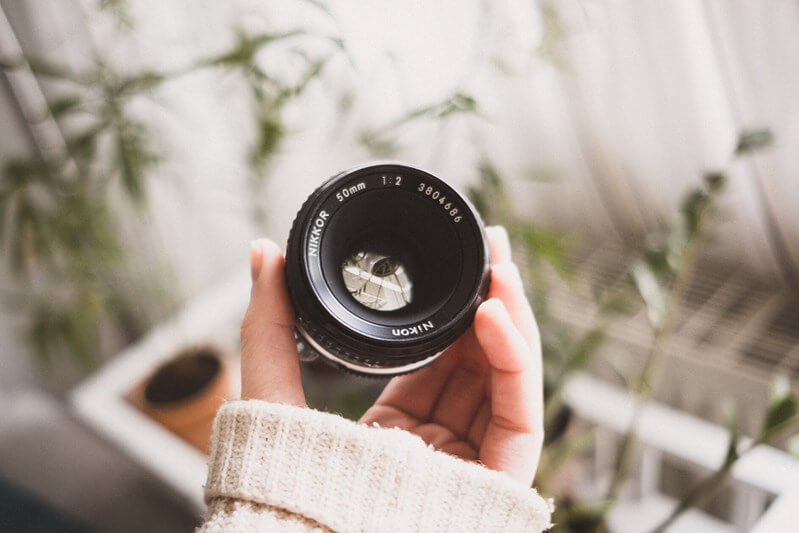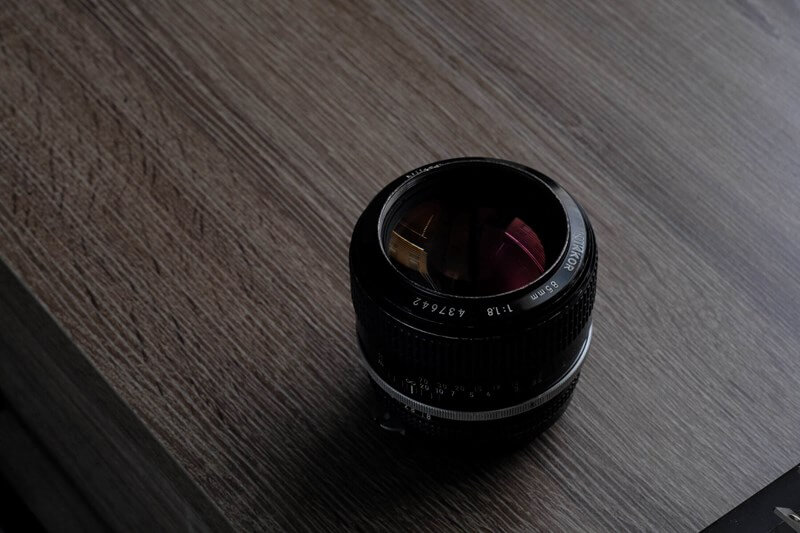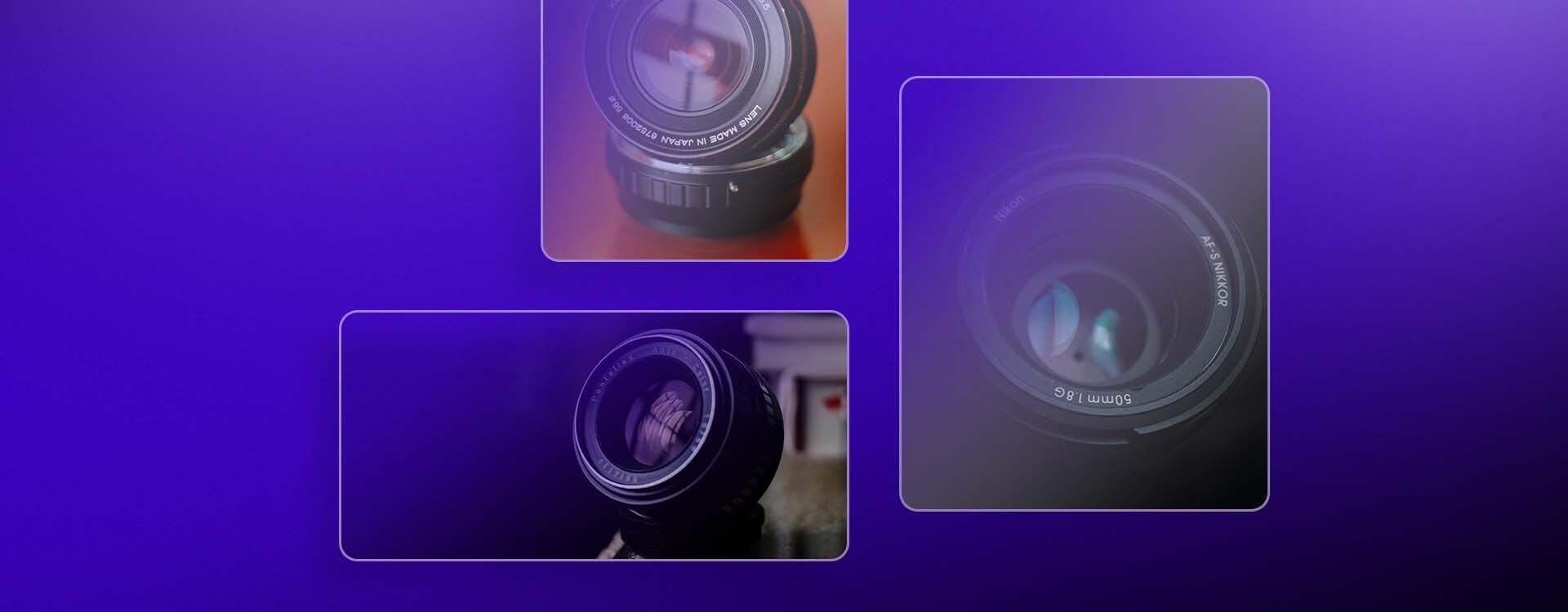Highlights
Table of Contents
Explore article topics
When you feel that you’ve pushed yourself as far as you can with your kit lens, what should be your next purchase? While the versatility of a higher-quality zoom lens might be appealing, a prime lens is absolutely worthy of your consideration. Here we look at what prime lenses are, how they compare to zoom lenses and why you might want to use them.
What is a prime lens?

A prime lens is a lens with a fixed focal length, for example, 50mm or 24mm. You cannot zoom in or out with a prime lens: it is a fixed lens. To get closer or move further away from your subject with a prime lens, you need to do it physically. You’ll often hear people refer to this as “zooming with your feet.”
While prime lenses do not have variable focal lengths, they do come as wide-angle lenses, telephoto lenses or normal lenses. The 50mm prime is known as the Nifty 50 for a reason: it’s inexpensive, lightweight and highly versatile. Yes, even with a fixed focal length, it’s a multi-functional lens. The Nifty 50 is great for portraits, street photography and even landscapes.
What are the benefits of using a prime lens?
It’s easy to think that the varying focal lengths of zoom lenses make them a better lens choice than a prime. They certainly offer you more flexibility. But prime lenses have a range of benefits that make them much more compelling choices than you might think.
1. Prime lenses are fast
Prime lenses tend to come with wide maximum apertures. For example, a 50mm prime lens might have a maximum ƒ-stop of ƒ/1.8 or even ƒ/1.4. This large aperture is useful in 2 ways. First, it allows lots of light to reach the sensor, making it good to use when shooting in low light. Whether you are a photographer or filmmaker, this is useful for using a fast or set shutter speed. Second, wide apertures produce images with a shallow depth of field, lots of background blur and beautiful bokeh. This gives you more creative choices.
2. Prime lenses are sharp
Not accommodating a range of focal lengths means that prime lenses have less glass and fewer moving parts inside them than zoom lenses. This leaves fewer opportunities for aberration or distortion, making prime glass more accurate and often with higher image quality.
3. Prime lenses can offer value for money
Having a relatively simple construction means that prime lenses are comparatively inexpensive to produce. So while you get more versatility with a zoom lens, the higher quality of a prime lens is often preferable.
4. Prime lenses are compact
With fewer moving parts than a zoom lens, prime lenses tend to be smaller and lighter. As a result, they are often more comfortable to use and great if you’re traveling or shooting on the go.
5. Prime lenses are good for your creative development
Not having a range of focal lengths at your disposal makes you consider each shot carefully when you use a fixed lens. This forces you to really think about your story and how you want to tell it. A little bit of restriction can sometimes fire your creative juices and make you hone your technical skills.
6. Prime lenses sometimes have depth of field scales
Not all prime lenses have a depth of field scale marked on their barrels any longer, but more so than on zoom lenses. If you prefer manual focus vs. autofocus, then a depth of field scale can be very helpful when composing your shots.
Get unlimited royalty-free 4K footage
Different prime lenses for different purposes
Prime lenses are made in a vast range of focal lengths, from 14mm fisheye lenses to 800mm lenses for wildlife videography. You will usually find that macro lenses are prime. We’ve already mentioned the versatility of the Nifty Fifty. Still, if you’re wondering about other types of prime lenses, the 35mm is the filmmaking classic and great for photojournalism and street photography. At the same time, the 85mm is regarded as the perfect portrait lens.

Photo by Matt Bero on Unsplash
Prime lens vs. zoom lens
Having just sung the praises of prime lenses so emphatically, it is worth remembering that zoom lenses serve a purpose, too.
Being able to zoom from 24 to 105mm without having to change your lens is useful in fast-moving situations or when conditions are sub-optimal. Having that kind of flexibility can be the difference between getting the shot and not.
Sometimes, there won’t be any option to get closer to your subject other than using a zoom lens. While “zooming with your feet” is a great way to really focus on your storytelling and encourage clarity and precision, there are occasions when it isn’t possible.
The wide apertures and build quality of prime lenses mean that they usually offer you a bit more bang for your buck than zoom lenses. However, you will also need more of them to cover the range of focal lengths that a zoom lens can, which can work out more expensive overall. You will need to consider whether the flexibility and convenience of zoom lenses outweigh the prime glass’s speed and quality.
That’s a wrap
Prime lenses are fast, accurate and often cheap when compared to zoom lenses. They might not afford you the range of focal lengths that come with zoom lenses, but their other benefits make them an absolute must-have in your gear bag. But remember, while you might only be able to have one lens on your camera at a time, what’s in your kit bag isn’t either/or and it’s worth having a range of different camera lenses. Both prime and zoom lenses have their uses and there’s room for them both.
Daniela is a writer and editor based in the UK. Since 2010 she has focused on the photography sector. In this time, she has written three books and contributed to many more, served as the editor for two websites, written thousands of articles for numerous publications, both in print and online and runs the Photocritic Photography School.
Share this article
Did you find this article useful?
Related Posts
- By Robert Hardy
- 12 MIN READ
Latest Posts
- 17 Apr
- By Daniela Bowker
- 7 MIN READ
